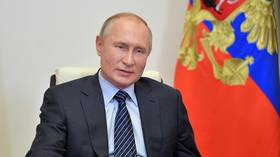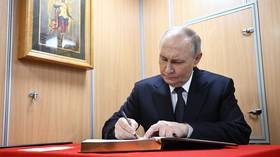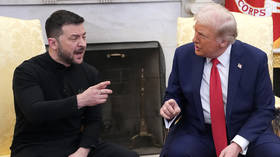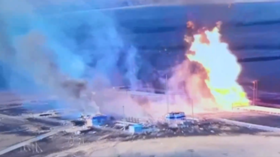Modi playing a high-risk game as he stands firm with US and takes aim at China
Having signed a new military agreement with the US, Indian PM Narendra Modi is moving ever closer to the west and further away from Beijing. But his bid to position India as a rival superpower to China will be hard to pull off.
On Tuesday, US Secretary of State Mike Pompeo and Defense Secretary Mark Esper visited New Delhi and met with their Indian counterparts.
There was one thing on the agenda: China. The meeting saw the US and India sign a new military agreement on the sharing of satellite data, aiming to bolster a potential coalition against China in the region, with Beijing having been locked in a dispute with India on the Himalayan border.
“Today is a new opportunity for two great democracies like ours to grow closer,” said Pompeo, urging the countries to confront the “Communist Party’s threats to security and freedom.”
Pompeo’s trip, which will also include visits to Sri Lanka and the Maldives, will be the last he makes before the US election, the timing indicating the urgent need to hammer these deals through before political sentiments potentially shift should Joe Biden enter the White House in January.
What is clear, though, is this: India, traditionally a non-aligned country, is increasingly casting its lot with the US. Prime Minister Narendra Modi has decided that tactically, India’s development path hinges on being closer to the west and he has consequently aligned itself with America’s “Indo-Pacific strategy”.
He sees more value in India aspiring to be a competitor with China, depicting his country as a great power and weaponizing nationalism for domestic support, than to find affinity with it. However, this requires caution.
Beijing still has the capability to cause trouble for New Delhi and has the upper hand in its relationships with most of its neighbours, including Nepal, Pakistan, Bangladesh and Sri Lanka. Thus, India faces an uphill battle even to exert its influence in its own immediate surroundings.
Under Modi and the Bharatiya Janata Party, India has seen a transformation towards populist-nationalism. Unifying the country under the idea of a ‘Hindu nation’, Modi has promised his voters a transformation of India, a pledge for development and a vision of it becoming a great power, in spite of the country’s many problems.
In doing so, Modi has sought to elevate the country’s sense of self-perception by courting a personal relationship with Donald Trump and presenting himself as a leading figure on the world stage. Trump’s presentation of Modi to a huge rally in Texas last year titled ‘Howdy Modi!’ was an example of this. But there is, of course, a lingering common interest which has brought these two countries together, too: their relationship with China.
Also on rt.com India will drive global energy demand – PM Narendra ModiThe US wants to use India as the key component of a coalition against Beijing in what has been framed as its “Indo-Pacific” strategy, which is a comprehensive vision of military coordination and containment.
In light of this, Modi sees China as the obvious ‘logical’ choice to unite his country against as a competitor. This ties into his economic strategy. Indian nationalists see China – with its advantages in manufacturing, and the dominance its products have in the Indian market – as stunting India’s own development capability.
This has been a theme of Modi’s government attempting to push a “make in India” campaign and actively attempting to woo supply chains away from China by taking advantage of western hostility towards Beijing over Covid-19. Thus, he has promoted ties with Washington while framing China as a rival.
But of course, this is all easier said than done. No matter how Modi portrays it, India is not on equal footing with China and is not about to ‘catch up’ any time soon. The International Monetary Fund predicts New Delhi’s economy will contract 10 percent in 2020, and not fully recover in 2021.
In addition, the country continues to lack the infrastructure, stability and organization to rival China’s industrial prowess, even if it has the workforce. Not all of Modi’s vision may come to fruition.
In addition, Beijing has a number of strategic advantages over New Delhi, including those strong relationships with all of its neighbours. Nepal, for example, has used India’s clashes with China to pursue its own grievances, while Beijing continues to pursue strategic investments in Pakistan, Iran and Sri Lanka which could ‘checkmate’ India. In many ways, the BJP faces an uphill battle to meet the expectations which it has set.
Nevertheless, these domestic political considerations are driving a transformation of India’s foreign policy. Rather than forming a fully fledged alliance with the US, India’s move is better described as a ‘tilt’- and one with the strategic vision of attempting to benefit from China’s growing rifts with the west, so lending itself to the fanatical cold war rhetoric espoused by Pompeo.
But questions linger as to whether this will be enough? India’s success will be determined more by fixing domestic problems than by confronting Beijing. Given this, the jury is very much out as to whether Modi’s gamble will pay off.
Think your friends would be interested? Share this story!
The statements, views and opinions expressed in this column are solely those of the author and do not necessarily represent those of RT.
















